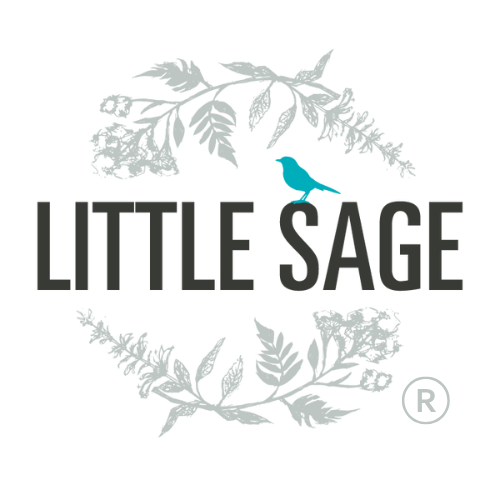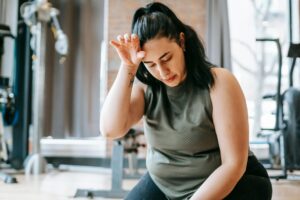A while ago, I decided to try a new exercise I’d seen all over social media. My goal? Tone my body, strengthen my bones and muscles. I thought it would complement my daily Qigong practice.
Well… it backfired. Instead of feeling stronger, I ended up straining my elbow and lower arm. What was supposed to help me actually set me back — and I found myself having to focus on rehabilitation instead of my original goal.
My experience was a stark reminder for me that more intensity is not always better, especially for my body that is sensitive, healing, and carrying a chronic condition.
It also reminded me why I practice Qigong daily — gentle, mindful movement that nurtures the body rather than punishing it.
When I returned to longer Qigong sessions and focused on gentle, restorative movement, not only is my arm healing, but I also lost weight — something I had been struggling to do with exercise. It was a side benefit, not the goal, and it felt more effortless.
That’s the essence of Qigong as gentle medicine– it meets your body where it is, restores what’s been strained, and invites healing without force.
So what’s the difference between exercise and gentle restorative movements?
Why does it matter, especially for women living with chronic illness?
That experience showed me something I see so often in my clinic– it’s not that our bodies are failing us, it’s that the type of movement we’re told to do is mismatched with what our bodies actually need — especially when living with chronic illness.
Most of us are taught to think of exercise as something you have to push through. More sweat, more effort, more intensity. That model is built on the assumption that the body has endless reserves of energy to draw from, and that the harder you work, the more resilient you’ll become.
But if you’re living with chronic illness, fatigue, or trauma, your body is already carrying an enormous load. Instead of building you up, intense exercise often pulls from reserves you don’t have, leaving you more depleted than when you started.
Why “Exercise More” Often Makes Symptoms Worse
- Chronic illness changes how your body responds to stress.
- Pushing through fatigue can trigger flare-ups, worsen pain, and leave the nervous system on high alert.
- Even well-intentioned exercise programs often ignore how trauma or prolonged stress shows up in the body.
The result? A cycle of frustration and exhaustion. You know movement is supposed to help, but every attempt leaves you feeling worse — and more discouraged.
What Restorative Movement Is (and Isn’t)
Restorative movement is gentle, slow, and intentional. It works with your body’s energy, not against it. Instead of depleting you, it nourishes your nervous system, regulates your breath, and supports circulation and healing.
For women with chronic illness, this distinction isn’t just important — it’s essential.
Restorative practices like Qigong help you reconnect to your body in a way that feels safe, compassionate, and sustainable. They don’t demand more than your body can give, they actually replenish what’s been lost.
Restorative movement isn’t about calories burned, strength gained, or performance measured. Its goal is restoration, regulation, and reconnection.
It prioritizes:
- Safety first: Movements are gentle, invitational, and adaptable.
- Energy building, not energy draining: You leave the practice feeling more resourced.
- Listening to your body: Movement responds to where you are, not a preset routine.
In short, restorative movement asks a different question than exercise does: “What would feel healing right now?”
Why Trauma-Informed Restorative Movement Is Essential
Many women living with chronic illness carry layers of trauma — from medical experiences, life experiences, stress, and/or generational patterns.
Trauma lives in the nervous system, and a nervous system in survival mode cannot benefit from traditional “push harder” approaches.
This is why I teach trauma-informed restorative movement practices like my Little Sage Method. My style of teaching creates safety first, slowing the nervous system down, and inviting your body to relax and restore. This safety is the foundation for real healing.
Why This Matters for Women
As women, we’re often taught to override our bodies and to push through fatigue, minimize pain, and measure our worth by productivity. Conventional exercise reinforces that pattern.
Restorative movement, in contrast, honors your body’s wisdom. It meets you where you are, respects your limits, and offers healing rather than depletion.
An Invitation
If you’ve tried to do traditional exercises only to find that it worsened your chronic symptoms, please know this– your body is not failing you. It’s asking for a different kind of movement.
The first step is understanding the difference. The next step is experiencing movement that restores, rather than drains. That’s why I’m excited to invite you to my free masterclass coming up soon in October 2025.
In the masterclass, I’ll talk in depth about why trauma-informed, restorative movement practices are important for women living with chronic illness. You’ll also get to experience a gentle practice and begin reconnecting to your body’s innate wisdom.
Reserve your seat below
Healing the deeper wound: A Trauma-Informed Masterclass for Women with Chronic Illness
This free masterclass reveals a trauma-informed approach, tailored to women’s physiology and feminine energy, designed to reach the deeper wound that conventional treatments (and most wellness practices) leave untouched.


